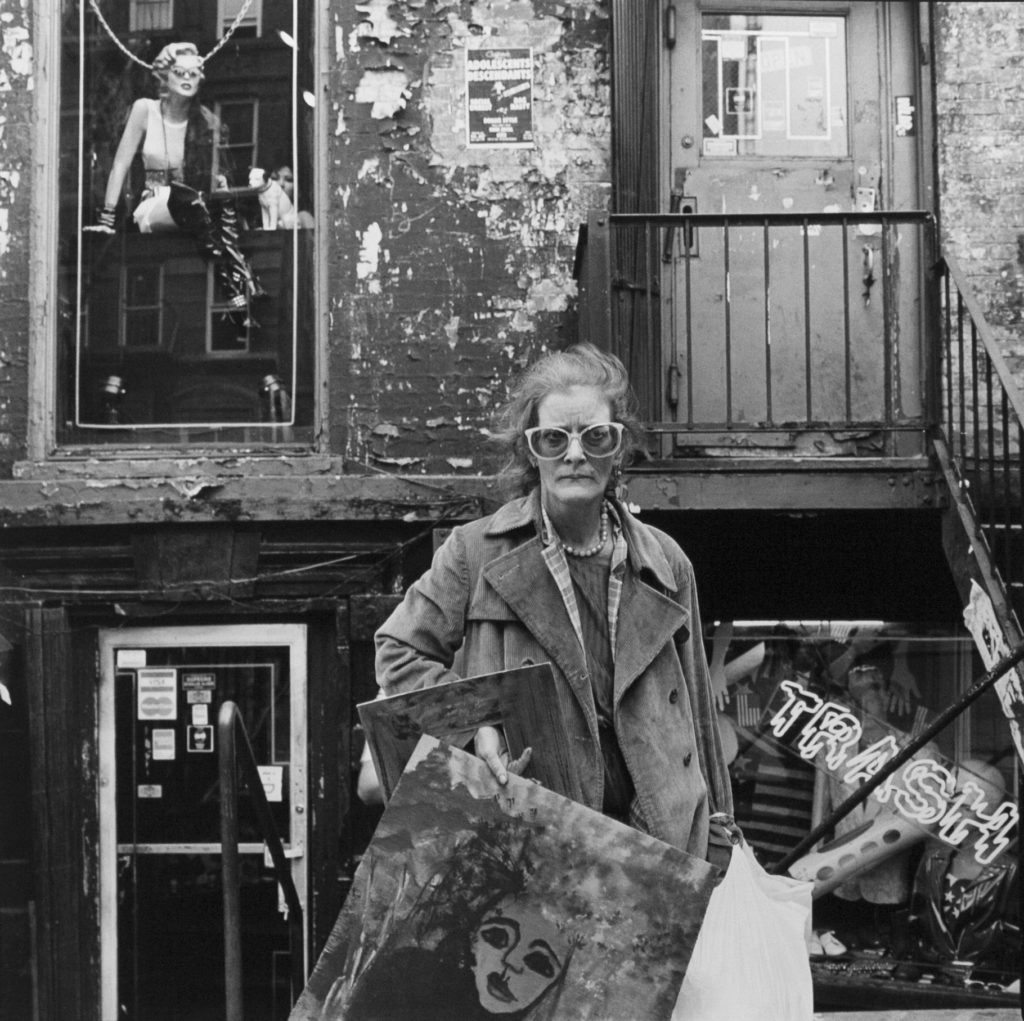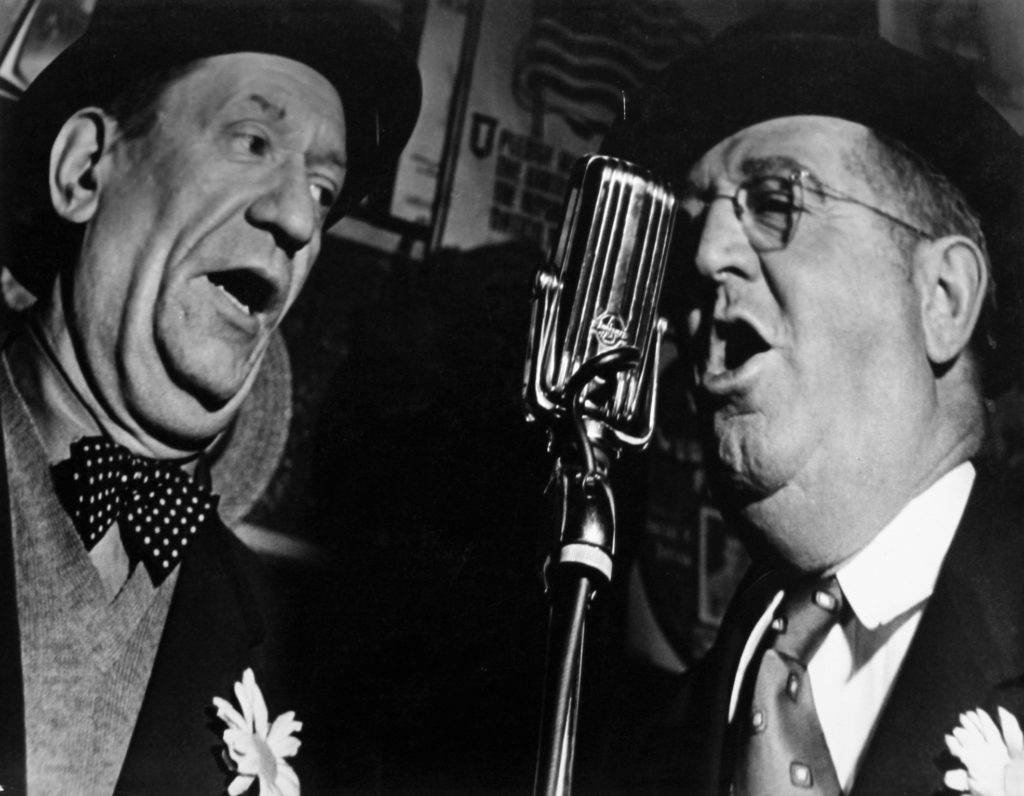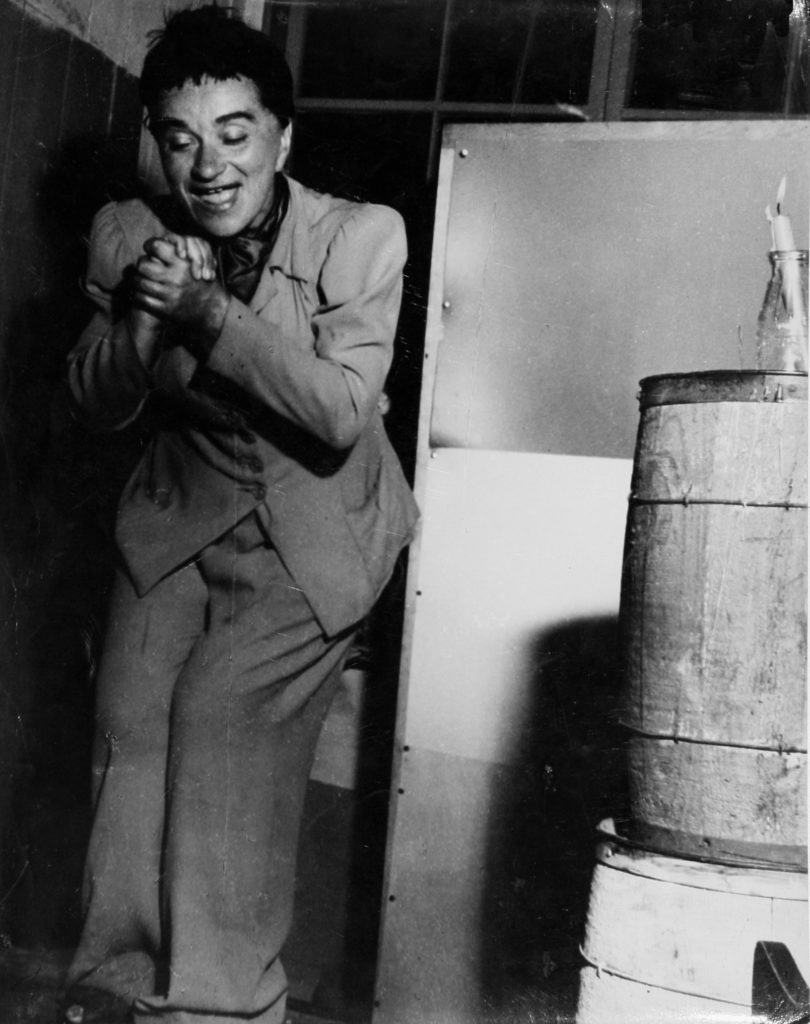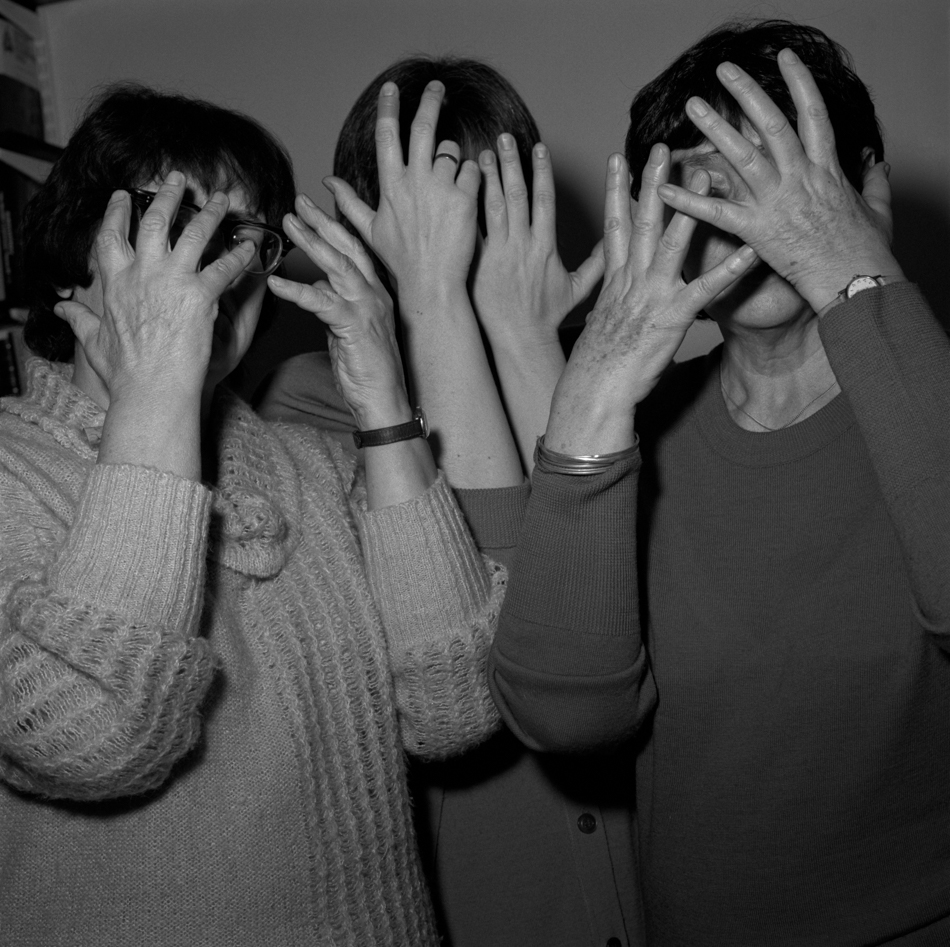
Rosalind Fox Solomon, Seattle, from “Portraits in the Time of AIDS”, 1987 (© Rosalind Fox Solomon. Courtesy of Bruce Silverstein Gallery, New York)
“We are the subject,” the title of the show currently on view at the Bruce Silverstein Gallery, cites Lisette Model’s notion of the photographer’s subject matter: “We are the subject,” she wrote in one of her teaching notebooks, “the object is the world around us.”
There are nearly forty images—dense, intense, almost claustrophobic—included in the show, which brings together the work of Model and two photographers who had once been her pupils, Diane Arbus and Rosalind Fox Solomon. (The three women were first—and last—shown together in 1977 at the Galerie Zabriskie in Paris.) “Photograph from your guts,” Model advised her students, an injunction to harness instinct, to channel, through the camera, anything—everything—with its pains and its triumphs. The camera was a conduit, a channel connecting the heart to the stomach to the brain and then short circuiting the whole setup. The camera was also, Model said, a detection device. “We are the subject” makes a compelling argument for the camera as Geiger counter, picking up and making visible the atmosphere’s radioactivity, the nuclear fields we carry around and travel through in our banal daily lives, the toxicities that make us human in the first place.
Put this another way: Homo sum, humani nihil a me alienum puto. “I am human, I consider nothing human alien to me,” the Roman playwright Terence insisted. What unites the work of these three photographers is the ability to look directly at the human condition and to withstand it. The images here make eye contact, dare you to a staring contest. Even when a subject shields his eyes, as the man does in Arbus’s A Family on their Lawn on Sunday in Westchester, NY, the pictures engage you in mutual gaze, in meta-gaze, in the sort of looking that demands you interrogate what looking at someone—what seeing someone—means.

Rosalind Fox Solomon, East Village Artist, 1986 (© Rosalind Fox Solomon. Courtesy of Bruce Silverstein Gallery, New York)
One knock on Arbus, perhaps the best known of the artists here, has been the suggestion of exploitative sensationalism, the allegation of a freak show aesthetic. But even a picture like The Human Pincushion, Roland C. Harrison, MD, of a man in his sixties stuck about the face, neck, chest, and arms with pearl-topped pins, is a back-and-forth. The human pincushion is nonetheless human. Everywhere in “We are the subject,” a subtle mortal drama unfolds. In Model’s photo of Sammy’s Bar, a man lights a woman’s cigarette, cups his hand around the spark. Neither is young, but the woman wears, rather touchingly, a butterfly in her hair. In one of Solomon’s photo, an East Village painter stands in front of Trash and Vaudeville on St. Marks. Behind her, like an angel/devil on her shoulder, a Marilyn Monroe mannequin sits in the storefront window; in front of her, the painter holds a completed canvas—one of her own?—like a halfhearted shield. These are the people you encounter on a crowded subway platform, the facts of their physical bodies and their abstracted lives, brushing up against you.

Lisette Model, Sammy’s Bar, 1945 (© The Lisette Model Foundation, Inc., Courtesy of Bruce Silverstein Gallery, New York)
And what if these pictures are freak shows? Who, after all, are you? One could easily say, as has been easily said before, that Model and Arbus and Solomon used the camera and the darkroom and the gelatin silver print as an exorcism, an attempt to purge the self by finding it elsewhere. But no matter how lurid the work might sometimes seem on the surface, it wards off vulgarity. It suggests that in seeing the world we are seen by it, as in that famous formulation from John Berger’s Ways of Seeing: “Soon after we can see, we are aware that we can also be seen. The eye of the other combines with our own eye to make it fully credible that we are part of the visible world.” Berger proposed that “the reciprocal nature of vision is more fundamental than that of spoken dialogue,” that, indeed, “dialogue is an attempt to verbalize this—an attempt to explain how, either metaphorically or literally, ‘you see things,’ and an attempt to discover how ‘he sees things.’”

Lisette Model, Portrait of Valeska Gert, 1947 (© The Lisette Model Foundation, Inc., Courtesy of Bruce Silverstein Gallery, New York)
Much has been written about Arbus, about her cloistered, privileged childhood, her escape from her debutante life into a different sort of world, peopled by giants and circus acts, triplets and fading grand dames, sad people on park benches. She took communion with them, spiritually, sexually, artistically. Solomon too ran away: “One night,” she wrote in her diary, “I was cooking lamb chops and the oven caught on fire. I knew then that I wanted to kill us both,” meaning herself and her husband. Photography, which she took up seriously in her forties, was a form of survival, a way to document how others found a lifeline. I won’t call her Portraits in the Time of AIDS, made in the late eighties, unflinching, because to do so would suggest that one could opt to flinch, and these images consistently defy the very notion. In one of these, included in “We are the subject,” a woman faces the camera, her arms around her friend, whose face remains unseen. His body is snuggled into hers, his head buried in her shoulder. “Kass and her friend,” the print is annotated on verso. Forthright Kass, who sees clearly all there is to rage against and all there is to shield with her body, looks directly at us, fear and love in her eyes. Model mentored both women. She pioneered her particular brand of street photography, an intimate documentation of people who caught her eye for their strangeness, for being themselves. Model was an expatriate, the daughter of Viennese Jews, who arrived in New York in 1938 and took to the Lower East Side. She preferred, she said, “an ugly body” for the way it could be “fascinating,” though the remark is belied by the evident empathy of her gaze. She seems to have identified with personal peculiarities, with small moments of private joy. Just look at her portrait of the besuited dancer and cabaret performer Valeska Gert, gleefully clasping her hands in glee, smile wide, eyes closed, in some backroom corner. The off-kilter angle on the shot disorients for a moment, a kind of visual tickling, a way of catching us in a moment of voyeurism and condoning the thrill.

Rosalind Solomon, Polish Shadow, 1988 (© Rosalind Fox Solomon. Courtesy of Bruce Silverstein Gallery, New York)
Model had refused to cooperate with the FBI and the House Un-American Committee and so found it hard to secure commissions and other work. She became a teacher, and she emphasized the power of the unexpected: an unanticipated angle, an unusual face, an unedited imperfection in texture and grain. And those blots and blemishes were revealing of the photographer herself.
But we—the audience, the viewer in front of these images—are no less their subject. In Polish Shadow, Warsaw Poland, Solomon captures three women, their hands covering their faces, their fingers letting small peeks through. I have looked through my fingers, and I bet you have too. But we looked. We looked.
Yevgeniya Traps lives in Brooklyn. She works at the Gallatin School of Individualized Study, NYU
from The Paris Review https://ift.tt/2oGfEDk
Comments
Post a Comment